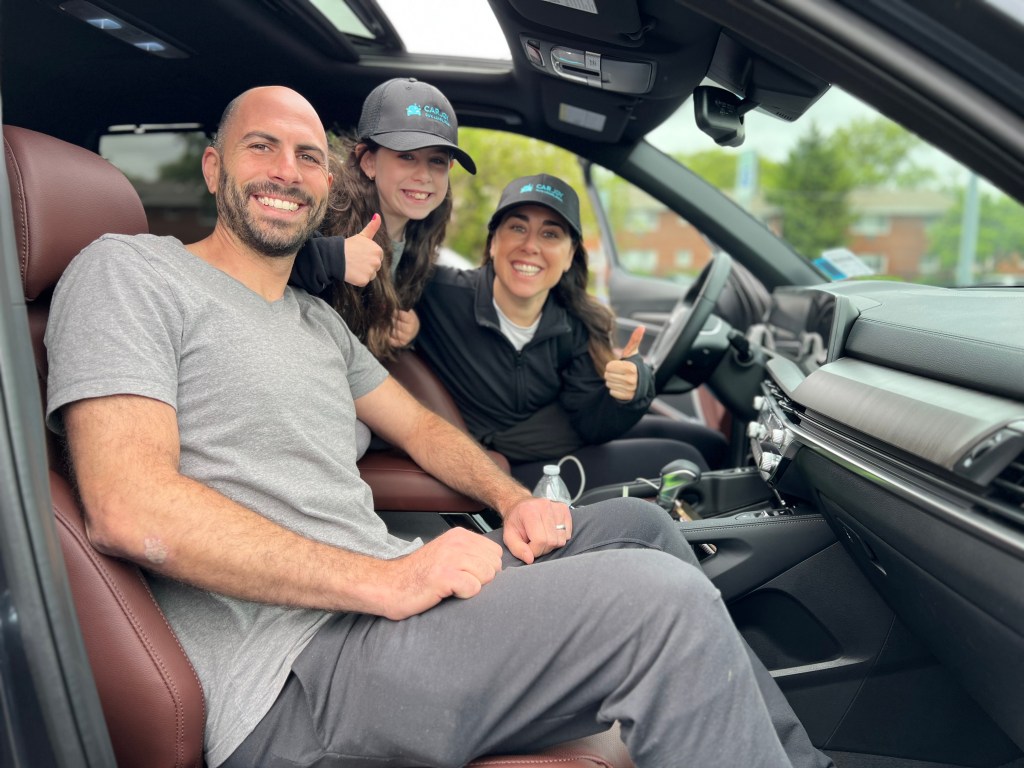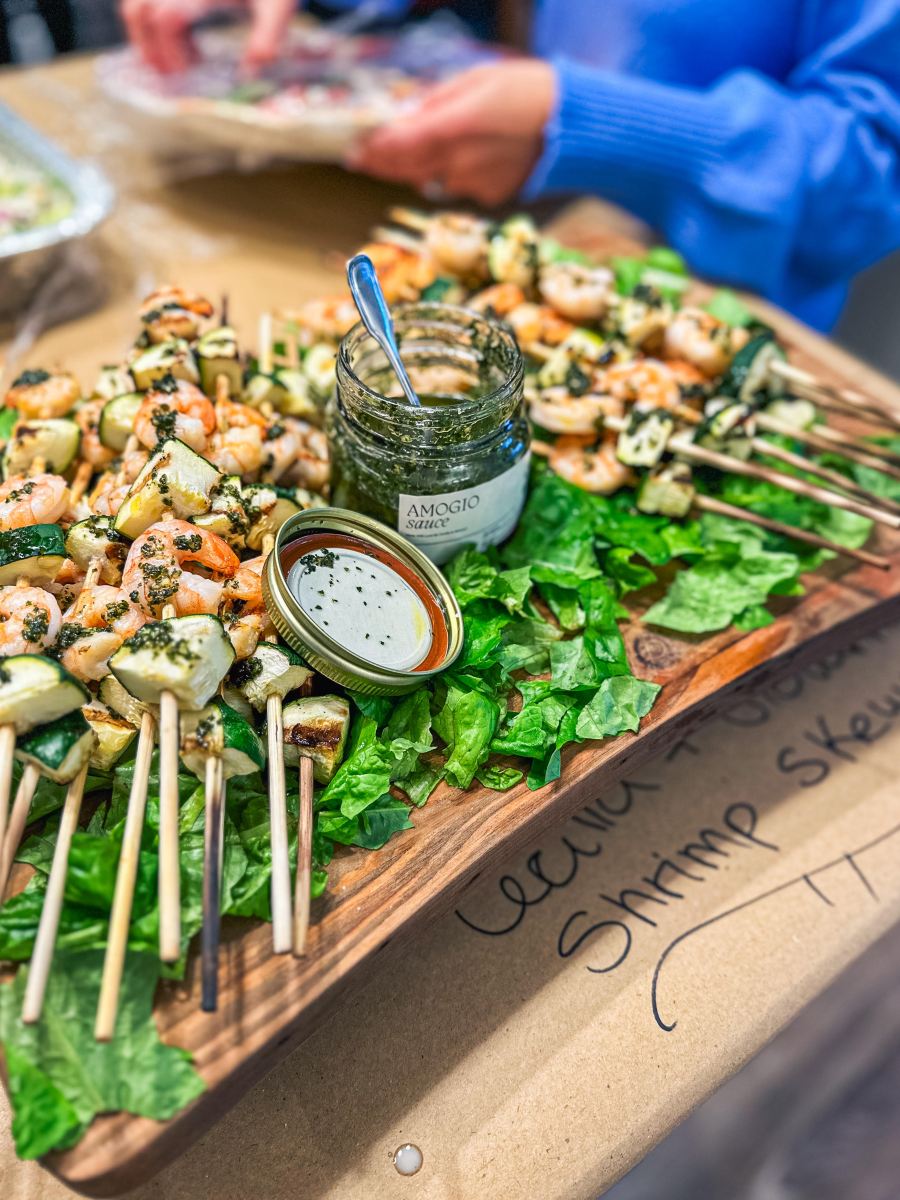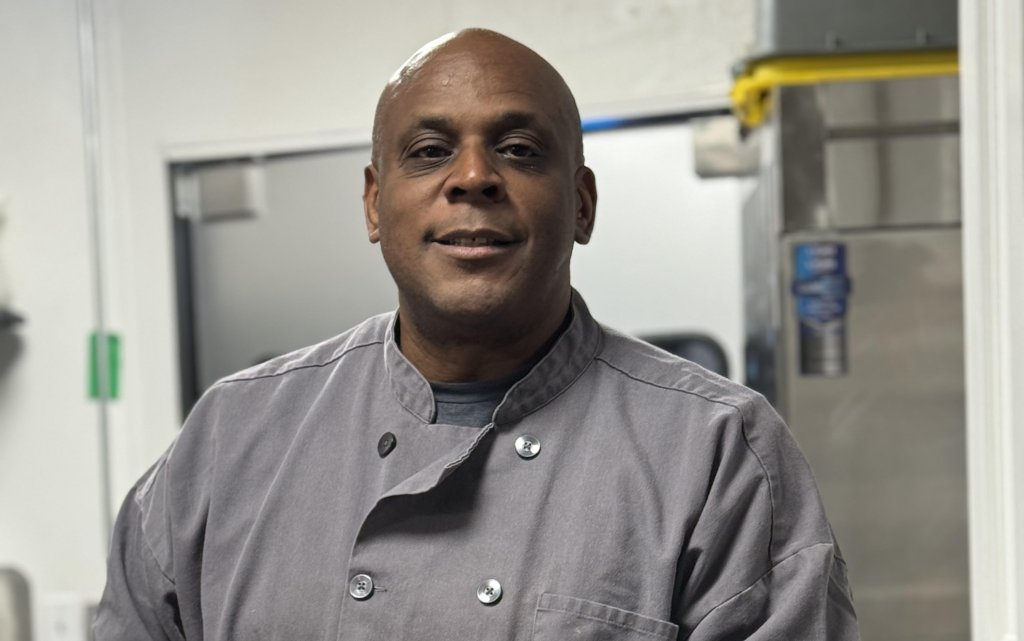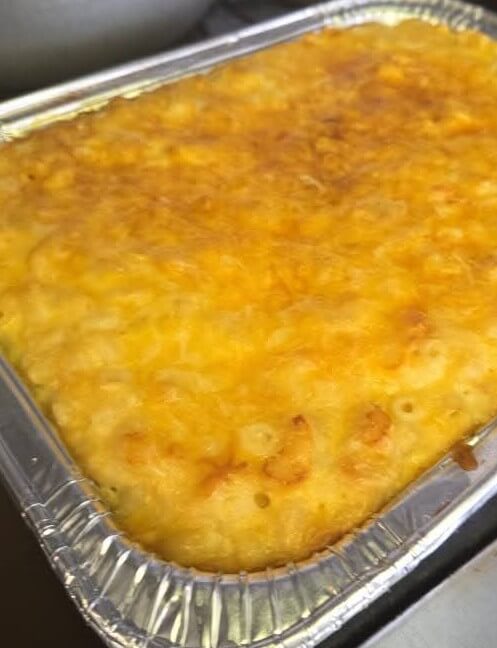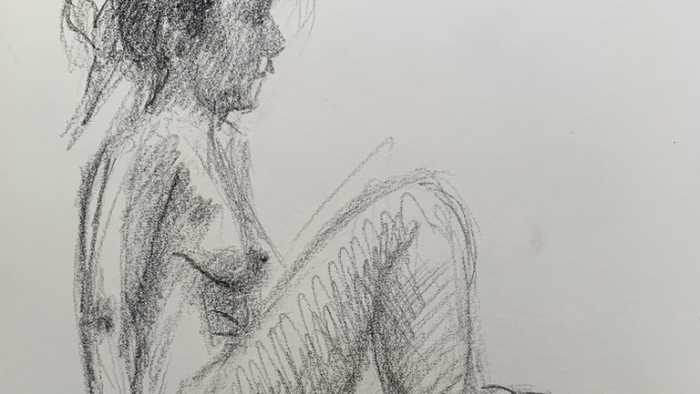Guest Essay: Journey to the East (End) by Mark Llewellyn Chapman
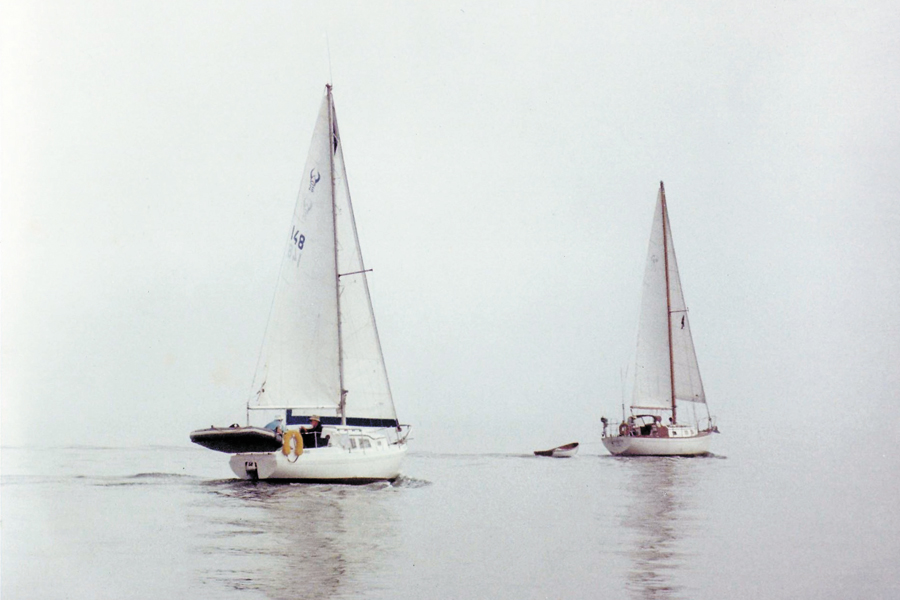
I came to know the Hamptons the old fashioned way, from the sea. I first laid eyes on the East End from the deck of a sailboat, like the Halseys, Gardiners and Hallocks of 350 years ago.
We were an unlikely seafaring family; my father was born and raised in landlocked West Virginia. (“Miner’s lady, stranger to blue water” per the old John Denver song.) He paddled canoes and messed about in rowboats on creeks and ponds, never going near any sailboat. Dad’s maiden ocean voyage was aboard The Queen Mary, in service as a troopship, at the height of WWII. Returning in triumph on a nondescript Liberty ship, he headed back to the heartland, far from the sea.
My mother’s people arrived here around 1910 in the steerage of various steamships, in varying degrees of misery. Safely disembarking, they covered the ground with kisses, swore Old World oaths, never to set foot on another vessel of any kind.
My father’s profession brought him to New York in the early ’60s, where proximity to salt water allowed his dormant maritime genes to express themselves. His mother was a first-generation Swedish-American, her cousins in Gothenburg were mariners and sea captains; the bold Viking DNA was intact. His father’s ancestors had willingly boarded Elizabethan-era cockleshells and sailed blithely off into the Western Ocean, landing in Connecticut in the 1640s. The die was cast; bold and reckless, foolhardy and feckless, Dad began a love affair with the sea that lasted all his life, and brought me to the East End.
We learned the rudiments of seamanship in the protected waters of Great South Bay and Oyster Bay, puttering around in a 13.5’ White Cap wooden sloop. The hull was lapstrake, constructed of overlapping planks, like the Viking longships of my Swedish forefathers. Stout and sturdy, slow but steady, this little craft forgave us our sins, and always brought us safely home. (In 1965 Robert Manry sailed his White Cap, The Tinkerbelle single-handed across the Atlantic; these were hardy little boats.) Dashes in and out of Jones and Moriches Inlets gave a tantalizing taste of blue water sailing; we needed a bigger boat.
Dad was a romantic Medievalist, with one foot firmly planted in the past, so it had to be of wood. He picked up a 19’ True “Rocket,” vintage 1957, restored it after a fashion, and got the four-cylinder Gray Marine engine up and running. It was no rocket; an anachronism when new, this cedar-planked, oak-ribbed sloop had spartan cabin accommodations to sleep four, fitfully. It looked more like a workboat than a pleasure craft, with brass portholes, a raked mast, and an oversized manual bilge pump firmly affixed to the cabin bulkhead. This should have raised a red flag.
My mother kept detailed logs, without which I could not recount our first foray into the Hamptons with accuracy. My Dad, a professional wordsmith, had no interest in lifting a pencil on holiday, save to work out some navigational problem.
First Voyage of Discovery—1965
On August 15, 1965, we left Moriches Bay in our wake, headed for Shinnecock Bay to the east. Dune Road in Westhampton Beach was dotted with one-story clapboard or cedar shingled “shacks” of various colors, some on stilts, some nestled in the dunes. These gave way to grander homes as we entered the Quogue Canal, where I deem the East End begins.
Sailing past East Quogue, (where I now live), we rounded Pine Neck into Tiana Bay, where a fleet of Sunfish, attempting to race, was becalmed in the lightest of breezes. The wind freshened, sweeping us beneath the Ponquogue Bridge, and into the widest section of Shinnecock Bay. As we passed Shinnecock Inlet, headed towards Old Fort Pond and the Indian Reservation to the northeast, a beautiful gaff-rigged sloop came sailing by, with an “SS” class insignia on the mainsail, the legendary “Magic Boat” so dear to East End sailors. In Old Fort Pond my little brother Geoff befriended a clam-digging bayman, who filled our dinghy with steamers. This was as far east as we got on our First Voyage of Discovery.
Over the next four years the Rocket plied Peconic and Gardiner’s Bay, exploring the two forks. My father kept her in sheltered waters; while she was sea-kindly, she was not sea-worthy. In short, she leaked like a sieve. In 1969, while living abroad, Dad received word that through benign neglect (or divine intervention) the Rocket had been left to founder at the dock in Oyster Bay. He washed his hands of the matter, abandoned the derelict hulk, moving on to a fiberglass Ericson sloop of up-to-date design. My father had just begun his revision of the Fourth Edition of Roget’s Thesaurus, completed in 1977; the advances paid for the Ericson. He was a shameless punster, so inevitably The Saurus was painted on the stern to the chagrin of all who knew its provenance.
Before signing on for another cruise with my father I had spent a long winter on a trawler in the Gulf of Alaska. My view of recreational boating had irrevocably changed, after seeing men risk life and limb wresting a living from a brutal, unforgiving ocean. I also discovered something about myself—I had an inexplicable fascination and love for the trackless wastes of the sea, a feeling of peace and fulfillment that only increased with distance from land. It’s what draws mountaineers above the timberline; a force both humbling and exhilarating. I discovered a sense of place in an environment that truly had no place for me at all. My father felt the same impulse, devouring the literature of intrepid trans-oceanic yachtsmen. To take the measure of his own passion, he needed to put deep water beneath the keel of The Saurus, and I was eager to assist.
Second Voyage of Discovery—1971
Thus I found myself making the South Shore run, ferrying The Saurus from Sandy Hook to Montauk. We sailed around the clock, taking watches at the helm, as the flat, featureless coast slid by to port. North of the shipping lanes, we saw few vessels; trawlers and sport fishing boats, tugs towing barges at a snail’s pace. Container ships appeared briefly, then slipped below the horizon, while jets passed overhead, bound for Europe.
We kept a safe distance offshore, avoiding shoals and marked shipwrecks, moving farther to sea during night watches. Through Dad’s WWII binoculars I studied the coastline; the houses on Dune Road, empty stretches of dunes interspersed with public beaches and private clubs, umbrellas and chairs adding color to the predominant shades of white sand, green grass and blue sky. Close to shore the sound of laughter, conversation and transistor radios reached us in muted washes of amorphous sound.
Off Amagansett we anchored in a dead calm, 100 yards off the beach. I rowed the Zodiac raft ashore, to procure something in town, I don’t recall what we needed. What I can’t forget is the fragrance of the privet-lined lane, the hiss of lawn sprinklers and the rattle of ice cubes in tall glasses as I passed by the manicured lawns of the fortunate few on that stretch of sandy road. When I reached Montauk Road there was little traffic; some wood-paneled station wagons, perhaps an MG or bug-eyed Sprite. I made my purchase at a sleepy gas station/general store, returned to the beach and rowed back like a benign commando to The Saurus.
The bluffs and cliffs that rose on the approach to Montauk Point appeared especially dramatic following the long stretch of flat coastline, and entering Lake Montauk through the narrow inlet, I gave my heart immediately and completely to that rough and tumble fishing village. So ended my second East End Voyage of Discovery.
My father never made the Atlantic crossing, but I did accompany him on cruises to Maine and North Carolina, hundreds of miles out to sea, where we shared that ineffable blue water rapture.
There are no coincidences, only correspondences and connections we grasp fleetingly in our peripheral vision. I’ve returned to East Quogue, 48 years after that first glimpse. We live down the road from a boatyard where SS sloops are lovingly restored. I cross the Quogue Canal as often as possible, to the Dune Road beaches I once studied intently through my father’s worn binoculars.
My attachment to the Hamptons is indelibly imprinted by this initial contact; the East End shows its qualities best when viewed from the sea. Sunlight, moonlight dancing on water, wind rippling through wetland grass, seagulls and songbirds intermingled. Beach shacks and cedar shake mansions baking in the midsummer heat, the silence of a privet-lined country lane, the gentle murmur of surf upon sand. No matter what the future brings to the East End, no matter how population pressure may transform the land, it will forever be beautiful, from the sea.
***
This essay is one of the many nonfiction works entered in the Dan’s Papers $6,000 Literary Prize for Nonfiction competition. The 2014 competition began Saturday, March 1. For more information on how to enter, go to literaryprize.danspapers.com.

Mark Llewellyn Chapman spent 35 years in the music business, as performer, songwriter and bon vivant. A former staff songwriter for Dick James Music, CBS Songs, etc. and production coordinator for Atlantic Records, he is presently self-underemployed after recently relocating to East Quogue from Nashville, TN.
